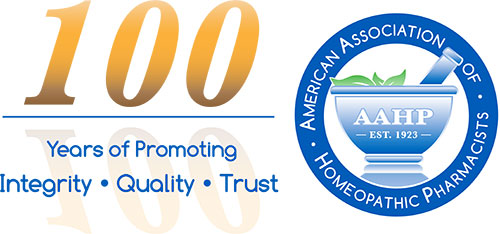“Be careful what you ask for!” This phrase surfaces more often than I would like in the pursuit of advancing homeopathic technology.
In six-sigma training years ago, I had admired W. Edwards Deming’s emphasis on quality as the reduction in variability and control of consistency. Those of us with extensive pharmaceutical backgrounds appreciate the isolation of an active pharmaceutical ingredient (API) and then testing and controlling it while processing, through its shelf-life, and ultimately for effective drug delivery. At the AAHP annual membership meeting I was delighted with our speaker, Neil Spingarn, who spoke of ultrasensitive analytical methodologies. As the homeopathic medicine market grows, no wonder that the questions from regulators, skeptics, and even some consumers are being directed at specific constituents, nonuniformity, and analytical data even at the nanogram level. These are important questions, and those asking have no obligation to “be careful” what they ask.
However, when I think about these questions, it brings me to a musical analogy. Picture a first-chair violin player perfectly tuning their instrument to an ISO A-440 pitch (or perhaps A-432 as some prefer), and carefully playing the same note over and over, verifying the pitch each time. This activity may strive for “six-sigma control” but as a listener I would certainly agonize over the monotony if nothing more were to follow. For me, I want to hear the entire orchestra deliver the full character and spirit of a musical performance. Likewise, the homeopathic consumer needs to experience the full character and spirit of their homeopathic treatment and not just a single controlled constituent. So, are the questions of consistency and detection of specific markers in homeopathic preparations to be dismissed?
With the current state of technology, these questions need to be addressed but also need to be carefully managed within the greater context of homeopathic medicine and how relevant the answers are to the effectiveness of the medicines. Tuning a violin is important, just as specific markers can give insight into a medicine and its preparation, and thereby “tune” a process for its ultimate “performance.” I keep the HPUS close at hand and regularly refer to the USP and ICH guidelines to “tune” properly. But importantly, Deming’s emphasis of quality pivots around measures that are important to the customer; in the case of homeopathy, this is the whole remedy and all that it offers. It’s a matter of “vital force,” not a single chemical detected at nanogram levels, but all characteristics of the homeopathic drug product. While there is plenty of opportunity, perhaps the more difficult work is best conducted by industry groups, specific companies, and researchers with a passion to “compose” with new technology. That is why when a research team makes one discovery, I encourage them to keep exploring!
Technology continues to advance rapidly and homeopathy needs to keep pace with these advancements and the questions that arise. I encourage each manufacturer to review process controls and adopt some degree of analytical testing on low-potencies. A great place to start is from Mother Tincture up to 3C or 6X potencies using UV-Vis and perhaps HPLC spectroscopy. At or beyond 6X, more sophisticated methods would be needed. At that point, the whole of homeopathy, the vital force, should not be muted by targeted questions of constituents. There are many published studies for medium and ultrahigh dilutions with better quality discoveries advancing every day. These studies and the innovative use of technology has much to offer in improving the homeopathic “performance.”
I have the honor of working with a great diversity of scientists and researchers. With so many curious minds, there’s a natural drive to keep pursuing and “carefully ask” the important questions.
